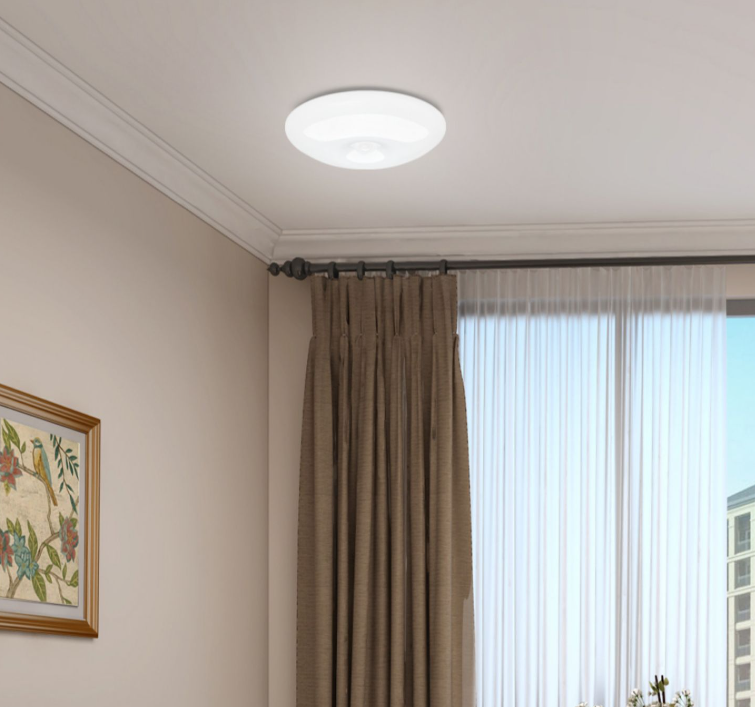Email format error
Email cannot be empty
Email already exists
6-20 characters(letters plus numbers only)
The password is inconsistent
Email format error
Email cannot be empty
Email does not exist
6-20 characters(letters plus numbers only)
The password is inconsistent

News at Ningbo Brilliant Dragon

Exploring the Versatility of LED Sensor Ceiling Lights
Introduction
In the world of lighting solutions, LED sensor ceiling lights have emerged as a versatile and energy-efficient choice. They offer not only superior illumination but also convenience and cost savings through their sensor technology. In this blog, we will delve into the various styles and designs of LED sensor ceiling lights, explore the different sensor types they employ, discuss their common applications, and provide insights into their indoor and outdoor usability. We will also compare these modern lighting solutions to traditional lighting methods.
Different Styles and Designs
LED sensor ceiling lights come in a wide range of styles and designs, making them suitable for various aesthetics and settings. Whether you're looking for a sleek and modern look or a more traditional design, there's a sensor ceiling light for you. Some common styles include:
1. Flush-Mount: These lights are designed to be mounted directly against the ceiling, creating a seamless and unobtrusive appearance.
2. Semi-Flush: These lights hang slightly below the ceiling, providing a balance between style and functionality.
3. Pendant Lights: Some sensor ceiling lights are designed as pendant fixtures, making them suitable for areas where you want a more decorative touch.
4. Retro and Vintage: For those with a penchant for nostalgia, retro and vintage designs are available, combining classic aesthetics with modern technology.
Sensor Types
LED sensor ceiling lights employ various sensor types to trigger their operation. Two common sensor types are:
1. Infrared (IR) Sensors: These sensors detect motion through heat radiation. When motion is detected within the sensor's range, the light activates. IR sensors are particularly useful in spaces where occupancy is intermittent, such as restrooms and hallways.
2. Microwave Sensors: Unlike IR sensors, microwave sensors emit continuous low-power microwave signals and measure the reflection off objects. They are sensitive to both motion and ambient light levels, making them suitable for a broader range of applications.
Common Applications
The adaptability of LED sensor ceiling lights makes them suitable for a multitude of applications. Some common areas where they shine include:
1. Commercial Spaces: LED sensor ceiling lights are ideal for offices, conference rooms, and meeting areas. They help conserve energy by automatically turning off when the space is unoccupied.
2. Residential Areas: They are perfect for homes, providing convenience and energy savings in hallways, kitchens, and closets.
3. Industrial Facilities: In warehouses and factories, sensor ceiling lights can help maintain safety and energy efficiency by lighting up when workers are present.
4. Retail Environments: Stores can benefit from LED sensor ceiling lights, as they not only save on electricity bills but also enhance the shopping experience by illuminating specific areas as customers move through the store.
Indoor and Outdoor Usability
While LED sensor ceiling lights are primarily designed for indoor use, there are outdoor-rated options available. These outdoor sensor lights are engineered to withstand environmental factors such as rain and UV exposure. They are suitable for use in areas like patios, entryways, and parking lots, where motion-activated lighting can enhance security and convenience.
Comparing to Traditional Lighting
LED sensor ceiling lights have several advantages over traditional lighting solutions. They are more energy-efficient, as they only activate when needed, reducing electricity consumption. This not only leads to cost savings but also a lower environmental impact. Additionally, LED lights have a longer lifespan, reducing maintenance costs and inconvenience. Furthermore, the flexibility of sensor-based lighting allows for customised settings to meet specific needs, enhancing the user experience.
Conclusion
LED sensor ceiling lights are a contemporary lighting solution that offers a wide array of styles, sensor types, and applications. Their ability to conserve energy, provide convenience, and enhance security makes them a compelling choice for both residential and commercial spaces. Whether you're seeking to improve your lighting while reducing operational costs or to add an extra layer of safety, LED sensor ceiling lights are a modern, efficient, and versatile option that is worth considering.


